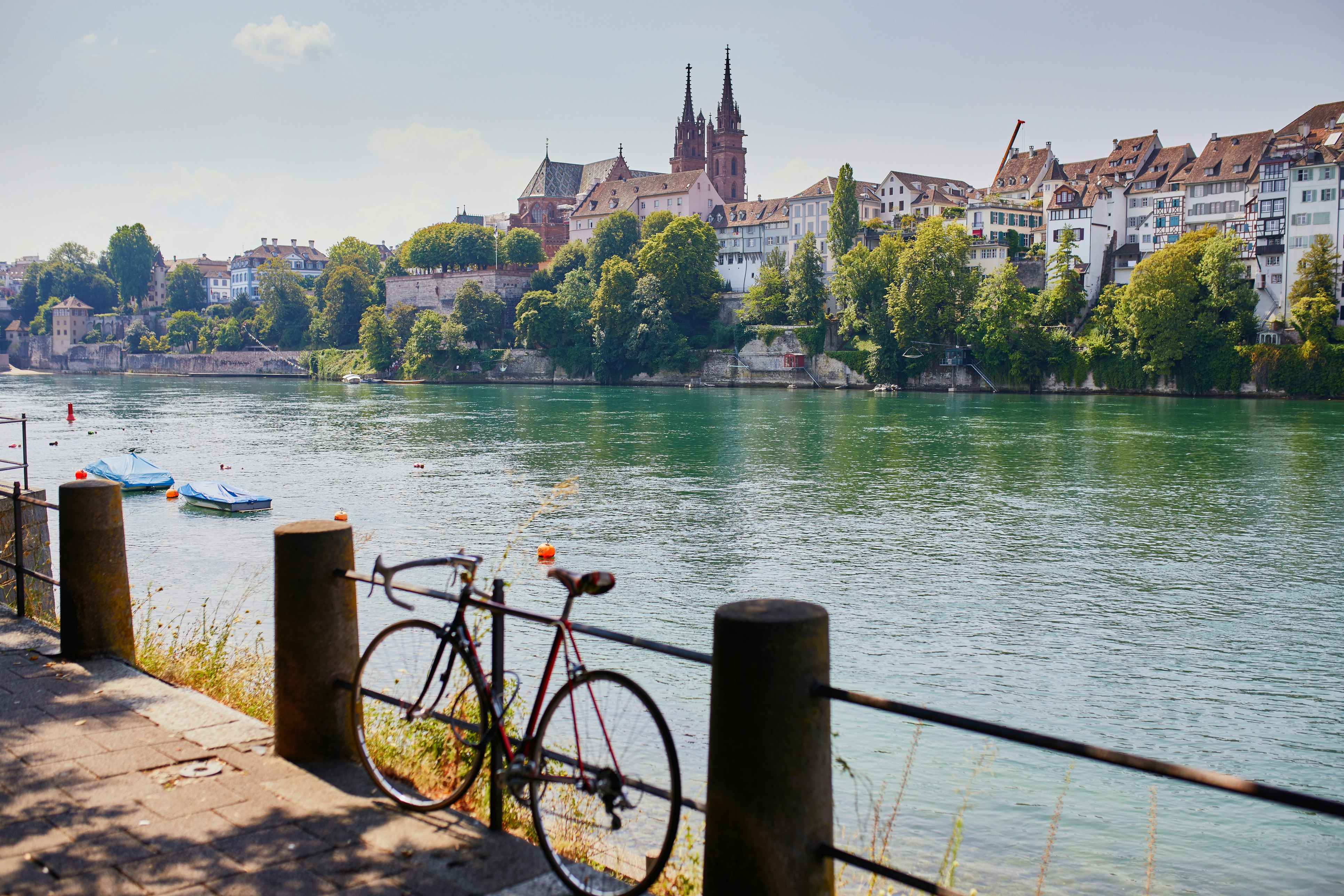No country has it all, but the Swiss are justified in feeling pretty smug about their lot.
In Switzerland almost every drive, train journey, boat trip or cable car ride has an element of the epic, taking you to thundering falls, gorges, valleys hidden deep in the mountains or World Heritage vineyards. Cities with medieval old towns, big-hitter galleries and extraordinary cultural collections are often just a whisper away from vivid turquoise lakes and the glacier-capped Alps. The stride between urban and outdoors is effortless.
Whether it’s floating down the Rhine in Basel, admiring Paul Klee’s punchy art in Bern, hiking below the mighty Matterhorn, feeling the thrill of ice at the Aletsch Glacier, or sipping Chasselas wines in the terraced vineyards of the Lavaux as the last sun touches Lake Geneva, these are some of the best things to do in Switzerland.
1. Float down the Rhine in Basel
At the point where Switzerland, Germany and France converge, Basel dives into creative waters when it comes to avant-garde art and architecture, with a raft of galleries right up there with Europe’s best. But this city also likes to let its mind drift.
Cue the Rhine, where office workers ditch their suits to take a dip, and families gather for a city swim on weekends. A novel way to see Basel is to grab a Wickelfisch (a fish-shaped waterproof bag to keep your stuff dry), make for the river banks in Kleinbasel, then strip to your bathers and float past city landmarks as the current carries you gently downstream. If you prefer to keep your head above water, rent a stand-up paddleboard or join a tour with Birs73. Locals like to end their dip socially, with drinks and a sunbathe at a buvette (riverside bar), especially on hot summer days.
Planning tip: Hop in just below Museum Tinguely to float 3km (1.8 miles) down the Rhine, or plot your own route by taking a look at the map. You can buy a Wickelfisch at the tourist office in central Barfüsserplatz.
2. Stargaze from your bed
It’s a night silent enough to hear your own heartbeat. Up in the Alps, darkness falls and the only sound is the gentle chime of cowbells. Constellations and distant planets sprinkle the sky like handfuls of glitter. Sound beautiful? It is. Harnessing the wild, Million Stars Hotel is a huge collection of open-air, one-of-a-kind sleeps across the country, where you can slip back to nature and enjoy a little pre-bedtime stargazing.
But we’re not just talking canvas here. These imaginative overnighters are ones that you’ll be raving about for years to come – from beautifully made-up beds plonked on top of remote mountains to a stylishly converted gondola on the edge of a crag, a bed under an apple tree and a “beehive” pod with views of Eiger’s mile-high North Face. And with this being Switzerland, they are not just clever but comfortable, too.
Planning tip: As each place only sleeps two, advance booking is highly advisable. Most are open from July to October.
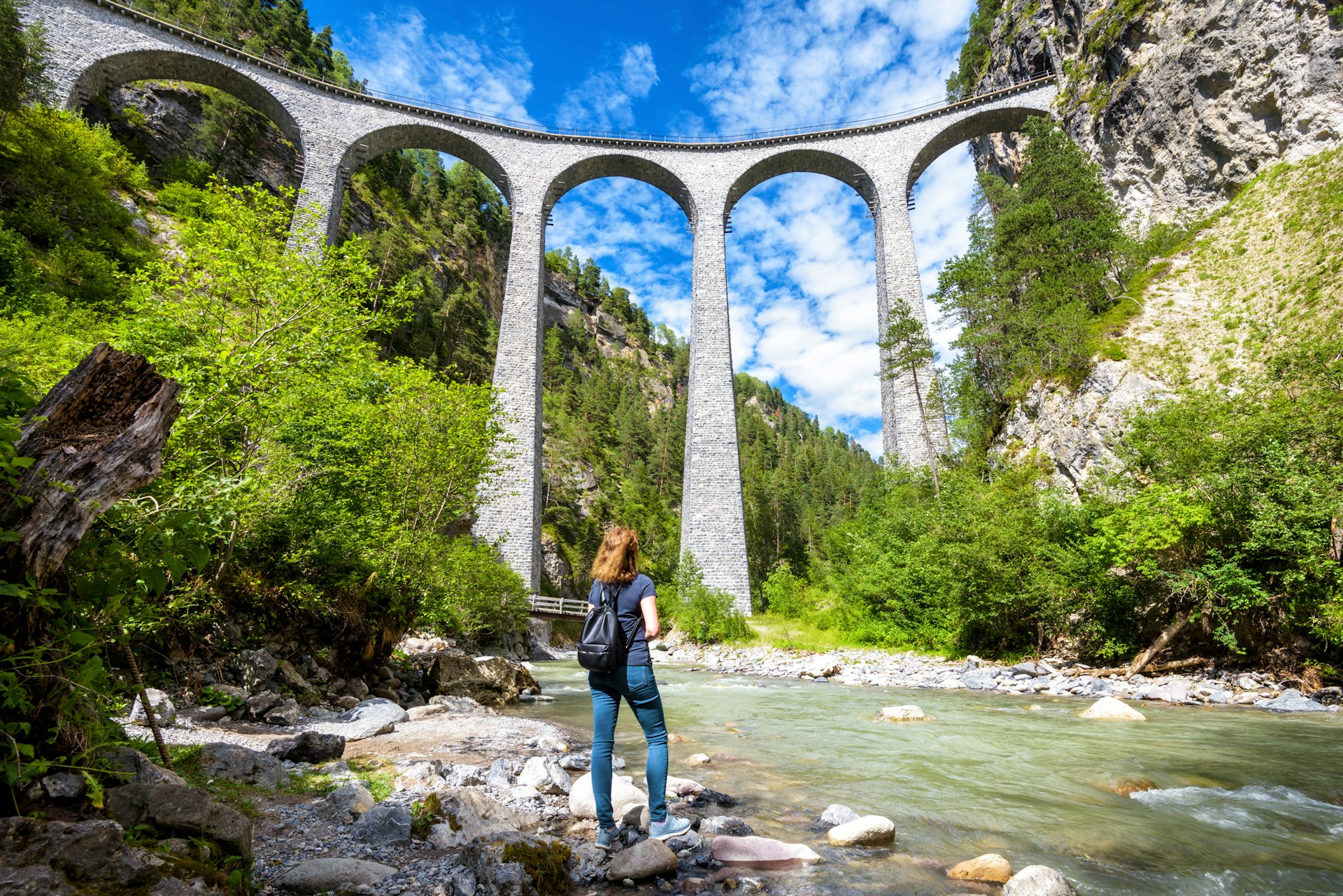
3. Ride the Glacier Express
No country nails rail travel like Switzerland, where little red trains (polished and perfectly on time) chug from valley to peak with ease, leaving you to swoon over the Alpine scenery from the comfort of your panoramic carriage. Evoking a golden age of travel, Switzerland’s train journeys are hands down some of the world’s finest.
The big one everyone is eager to do at least once (and with good reason) is the Glacier Express, which crosses over the Furka, Oberalp and Bernina passes on the eight-hour ride between Zermatt and St Moritz in Graubünden’s Upper Engadin. Riveting views of meadows, forests, fast-flowing turquoise rivers, canyons, castles, big-shouldered mountains and glaciers keep you glued to the window. The entire journey is a remarkable feat of 1930s engineering, but special mention goes to the Landwasser viaduct – the gravity-defying six-arched bridge that leaps between Tiefencastel and Filisur, and the Oberalp Pass (2,033m/6,670ft), harnessing the true wilderness of the Swiss Alps.
Planning tip: If you want to save a few francs, regularly scheduled services plying the same route can be just as enjoyable and significantly less expensive. Break up the journey by using cheaper SBB trains and overnighting along the way.
4. Hike in the Swiss National Park
For a taste of the Alps before tourists rocked up, head southeast to the Swiss National Park in Graubünden’s Lower Engadin valley, where the mountains nudge their way over into Italy. Easily accessed from the quaint villages of Scuol, Zernez and S-chanf, Switzerland’s only national park is a 172-sq-km (66-sq-mile) visual feast of rushing streams, high moors, pastures, glaciers, larch, pine woods and lakes. Here, nature has been left totally to its own devices: no trees are felled, no meadows are cut, and no animals have been hunted since the park was founded in 1914.
The only way to properly see the park is by chucking on boots and heading for its trail-laced heart. If you only have time for one walk, make it Lakes of Macun, a 21km (13-mile) day hike from Zernez, leading to a high Alpine plateau splashed with 23 lakes that shimmer topaz and sapphire. If you prefer, you can join a guided walk with one of the park rangers (you can book these at the visitor center in Zernez). With an expert in tow, you stand better chances of spotting rarities like wild edelweiss, ibex, chamois, golden eagles and bearded vultures.
Planning tip: Camping is off-limits, but you can stay the night at the gloriously remote Chamanna Cluozza. At 1,882m (6,174ft) above sea level, this is quite possibly the off-grid log cabin of your wildest Alpine dreams. The hut is reached on a moderately challenging 3½-hour uphill hike from Zernez. Bring your own sleeping bag.
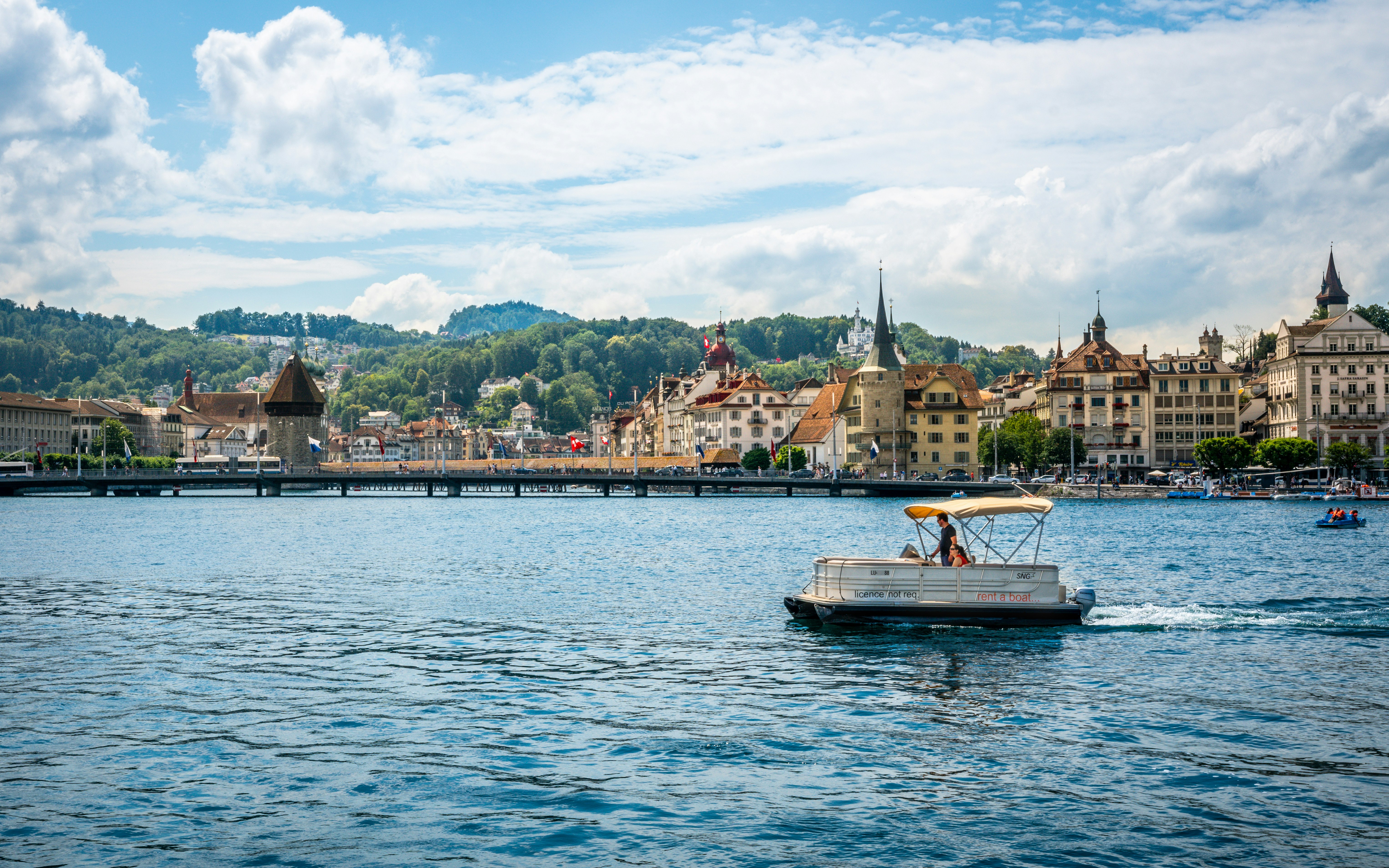
5. Boat across Lake Lucerne
There are higher mountains in Switzerland than those lining the fjord-like shores of Lake Lucerne, but none are more enshrined in flag-waving Swiss myth. Boat across the emerald waters of Lake Uri and you’ll glimpse Rütli Meadow, the hallowed birthplace of the Swiss Confederation in 1291. You can also experience the Tellskapelle, a tiny, frescoed chapel that is said to be where the apple-shooting hero and beloved Swiss rebel William Tell escaped from the boat of his Hapsburg captor, Gessler.
Legends swirl like storm clouds over the mountains on the doorstep of Lucerne. Since 1889, the world’s steepest cogwheel railway has been rattling up to 2,128m (6,981ft) Mt Pilatus, where the restless ghost of Roman prefect Pontius Pilate is said to still roam. Never mind the spook stories – you’ll be captivated by the views reaching as far as Germany’s Black Forest on cloudless days. Its beauty rival is 1,797m Mt Rigi (5,895ft), famous for its painterly sunrises and sunsets and once a source of fascination to JMW Turner, who painted it in three different moods.
Planning tip: Lucerne makes an appealing base for exploring the lake, with its Old Town, medieval wooden bridge and promenade strung along the lakeshore.
6. Take the Eiger Express to Jungfraujoch
You’ve got to hand it to the Swiss – they are always ahead of the game. Since 1912, a little red train, fueled by hydro-power from the outset, has wound its way up to Jungfraujoch, Europe’s highest train station at 3,454m (11,332ft), blasting through the icy heart of Eiger. Just recently, the journey has become even more eco-friendly with Grindelwald’s Eiger Express, a super-speedy tri-cable gondola that covers the first leg of the journey using its wheels to generate green power. The ride will make you gasp out loud as you float above the landscape, with spruce forests and log chalets giving way to a realm of rock and ice. You’ll get so close to Eiger’s beastly, mile-high North Face that you’ll feel as though you’ll slam right into it.
At the top of UNESCO World Heritage-listed Jungfraujoch, temperatures drop and the world is always white. You’ll be wowed by the view from the Sphinx observation deck, reaching across a sea of snow-capped, 4,000m (13,123ft) peaks and the 23km (14.2-mile) swirl of the Aletsch Glacier while Germany and France hover in the distance. The frosty Ice Palace is a wonderland of ice tunnels and sculptures – they are impressive today but must have been even more so back when mountaineers first hacked them out by pickaxe in the 1930s.
Planning tip: Bring warm layers and boots, particularly if you fancy the 45-minute stomp to Mönchsjochhütte, Switzerland’s highest serviced mountain hut.
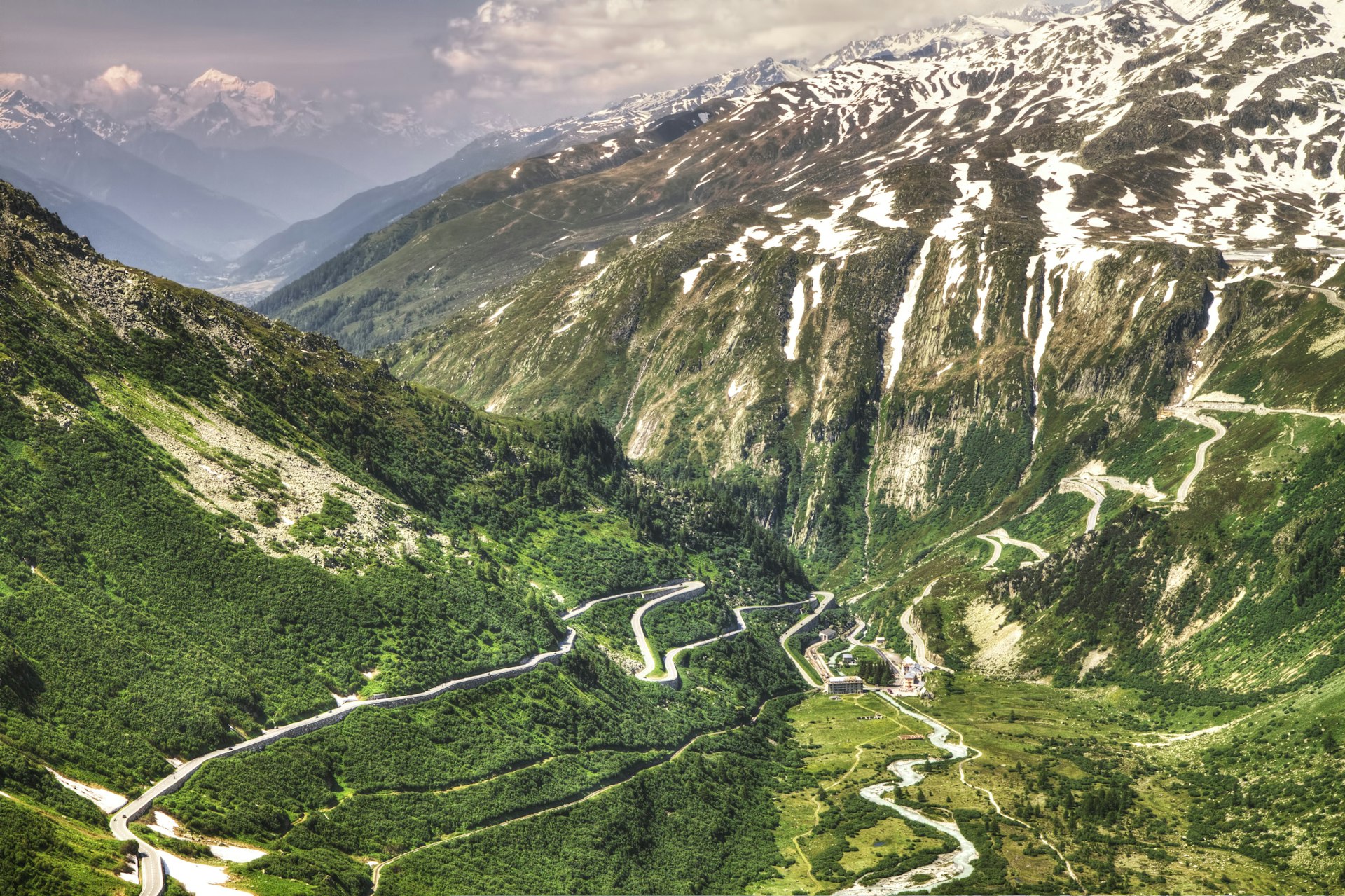
7. Drive the Furka Pass
You won’t be able to tell if it’s the stomach-flipping hairpin bends or the gob-smacking views that make your heart beat so wildly on this high, twisty, up-and-over-the-Alps drive from the isolated valley of the Goms in Valais to mountain-encrusted Andermatt in Uri – the gateway to southeast Switzerland.
Drive the 31km (19-mile) Furka Pass from west to east to maximize the drama as dark, craggy peaks and glaciers fill your rear-view mirror. If you have a bit of a Bond moment behind the wheel, it’s no coincidence – this road starred in the car chase scene in the 1964 movie Goldfinger. As you swing dizzily around switchbacks, the road tops out at the 2,429m (7,969ft) Furka Pass, where you can peer across the lunar rockscape of a wind-battered plateau to the deeply crevassed Rhône Glacier and its ice grotto before the long, sweeping descent to Andermatt.
Planning tip: The road is open roughly from June to October (depending on snow) but check conditions before heading out.
8. Get active in Ticino’s valleys
In the sultry, parle Italiano canton of Ticino in southern Switzerland, it’s the lakes that get all the love. But dip into Ticino’s hidden valleys and you’ll lose the crowds and find the region’s true pulse. Here glassy, jewel-colored rivers float past chestnut woods and incredibly pretty granite hamlets cresting hilltops (including Switzerland’s smallest, Corippo, with a population of just 15). And after a day’s hike or bike ride, you can kick back on the vine-swathed terrace of a rustic grotti (tavern) for polenta and brasato (beef braised in red wine) with a glass of the beefy local Merlot.
The wild, woody Valle Maggia is a magnet to mountain bikers and hikers, laced with 700km (435 miles) of trails, including the challenging 52km (32-mile), six-day Via Alta that spotlights the region’s best. For more adventure, head over to the rugged Val Verzasca, bisected by its namesake emerald river and crisscrossed by the Sentiero Verzasca trail. Every Alpine activity imaginable is offered in this valley, from hiking and cycling to rafting, bouldering, paragliding and bungee jumping from the 220m (656ft) Verzasca Dam, which starred in the opening scene of GoldenEye. Swissraft makes it happen.
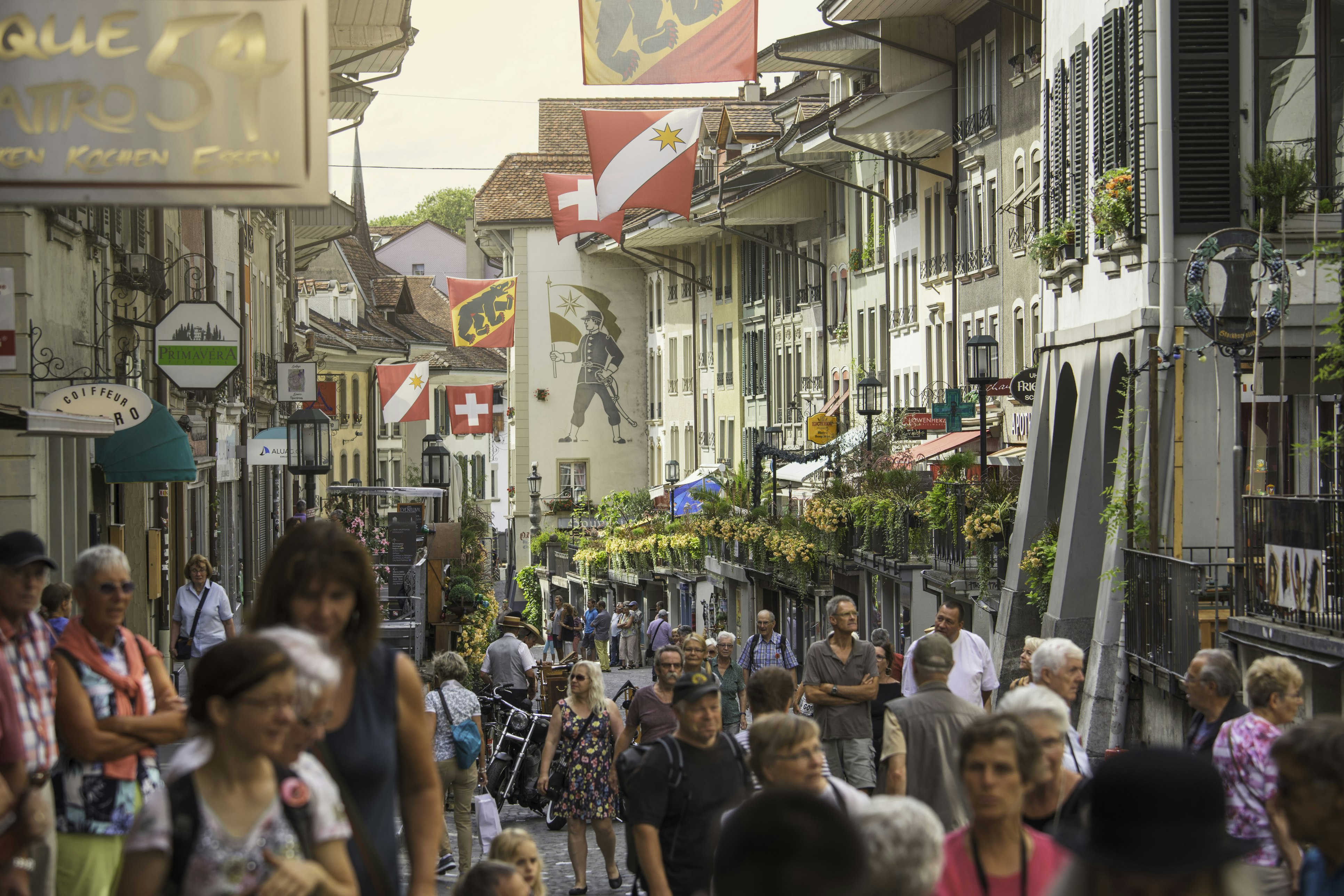
9. Have a culture fix in Bern
You might have an I-can’t-believe-it’s-the-capital moment roaming the streets of Bern, with its refreshingly easygoing vibe, parks and alfresco cafes, resident bears and lush backdrop of hills. The city is certainly a looker, situated on a sharp bend in the startlingly turquoise Aare River, encircled by gentle hills and with views of the snow-frosted Alps on crisp, clear days. And you can get your cultural kicks here, too.
Begin with a romp around the Altstadt, Bern’s medieval, cobbled, arcaded, flag-bedecked heart. Here you’ll spy the ornate Zytglogge clock (come at four minutes before the hour for the glockenspiel parade), the 15th-century Gothic Münster (hike up its lofty spire, Switzerland’s tallest, for far-reaching views over the rooftops) and many folkloric fountains, including the Kindlifresserbrunnen, depicting a giant snacking on children.
Museum-wise, Bern is a treat. Tour the apartment where Einstein lived and the magnificent Kunstmuseum, home to Renaissance masterpieces, Monets and Picassos. Make the short hop out to Renzo Piano’s bold, wave-like Zentrum Paul Klee to see the color-charged works of Swiss-born German artist Paul Klee.
Detour: Break up sightseeing with a wild swim in the Aare River. When the weather warms, join the Berner for a cooling downstream float.
10. Ski or hike below the Matterhorn
Nothing sums up Switzerland’s outdoor-loving spirit better than the Matterhorn, the peak that has broken many a rock climber’s rope (and soul) and has a chocolate bar (Toblerone) shaped in its honor. Arrive in Zermatt on the train that chugs from Täsch. Like those who have come before you, you won’t be able to stop yourself from obsessively gawping at that mountain.
And who could blame you? Razoring up above the Italian border in southern Valais, this 4,478m (14,691ft) fang of rock and ice is utterly mesmerizing, especially when seen from above. You can ski, hike or climb in its pyramid-shaped shadow by riding the world’s highest-altitude 3S cable car to 3,883m (12,739ft) Matterhorn Glacier Paradise, on the Klein Matterhorn, with views reaching deep into the Swiss, French and Italian Alps.
For close-ups of the melting ice, hook onto the two-hour, 6.5km (4-mile), moderately challenging Matterhorn Glacier Trail. When the flakes fall in winter, you can pound the powder on 360km (223 miles) of ski runs, some of which dip over the border into Italy and nearly all of which offer distractingly lovely views of the Matterhorn.
Planning tip: If you have some climbing experience under your belt, you can climb your way to the top with an Alpine guide.
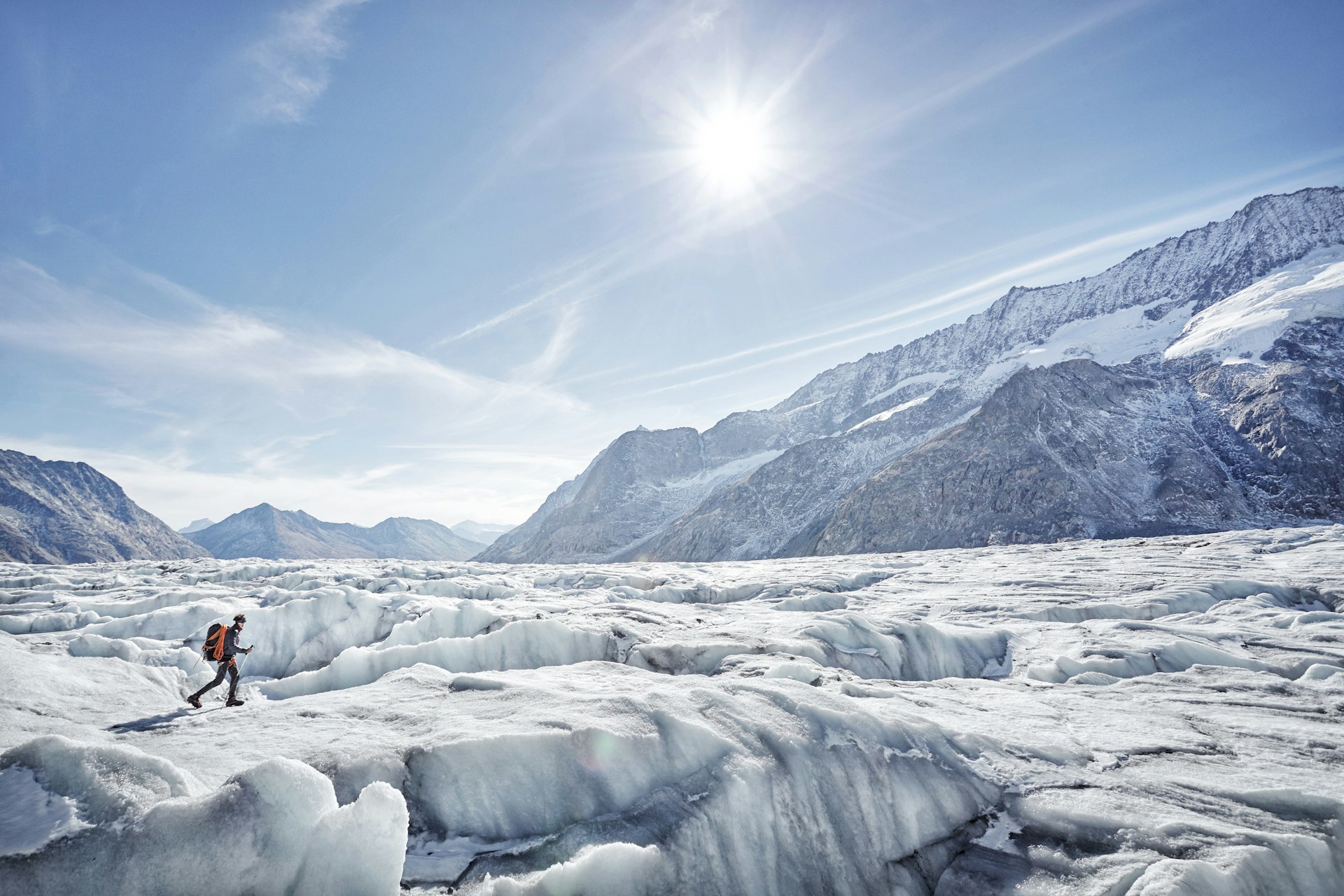
11. Admire the Aletsch Glacier
As you journey into the remote Goms valley in Valais, the Alps take a turn for the wild and the hamlets are pure Heidi stuff with sun-blackened chalets and flower-freckled meadows sweeping up to whopping mountains. The Matterhorn gets all the fuss, but just as arresting is the Aletsch Glacier, the jewel in the crown of the Jungfrau-Aletsch region. Powering past wispy waterfalls, rock spires and the dagger-shaped summit of Aletschhorn (4,193m/13,756ft) like a six-lane glacial superhighway, this 23km (14 mile) swirl of deeply crevassed ice is the longest and most voluminous glacier in the Alps.
Observe the glacier from the viewpoint, or – for close-ups – hit the trail on the 17km (10.5-mile), five- to six-hour hike from Fiescheralp to Bettmeralp where every bend in the ice reveals phenomenal views and the odd Valais Blacknose sheep. If you prefer instant thrills, wobble across the Aletschji–Grünsee Suspension Bridge, which straddles the 80m-deep Massa Gorge.
Planning tip: Reaching the glacier is part of the fun. From Fiesch, take the cable car up to Fiescheralp, then beyond to Eggishorn for your first glimpse of the mighty Aletsch.
12. Walk among vines in Lavaux
In the country’s western crook, the UNESCO World Heritage-listed Lavaux vineyards are heaven on earth to oenophiles. The world’s steepest vineyards stagger up the terraced hills above Lake Geneva. If you’ve never heard of them, it’s because the hand-picked wines are so select and small-batch that the Swiss keep most of them to themselves – few bottles ever reach export.
Before hitting the caveaux (wine cellars) for a petite dégustation (tasting), brush up your wine knowledge. It’s said that these grapes are blessed by three suns: the one in the sky, the one on the lake and the one radiating heat from the dry-stone walls. The main grape is Chasselas, a very old variety producing crisp, flinty white wines with a fresh, citrusy nose. The fruity reds (Gamay, Pinot noir and Salvagnin) make up just 20% of production.
You can drive the meandering roads that loop around 40km (25 miles) of shore or take the Lavaux Panoramic Train, but you’ll get a better feel for the Lavaux by heading out on foot. Little trails dip into the vines everywhere, but top billing goes to the 11km (6.8-mile) trail from St-Saphorin to Lutry, where you’ll take in stirring views, pretty villages and welcoming cellars.
Planning tip: For a great primer on Lavaux wines, stop off at Vinorama in Rivaz. Housed in a strikingly revamped bunker, the lakefront center speeds you through the wine-growing process, and you can sample dozens of different wines in the Espace Dégustation.
